Dubai is a city that increasingly fascinates the French.
Located in the United Arab Emirates, it enjoys a strong economic growth for over 30 years.
Together, let's discover the figures that make up the city!
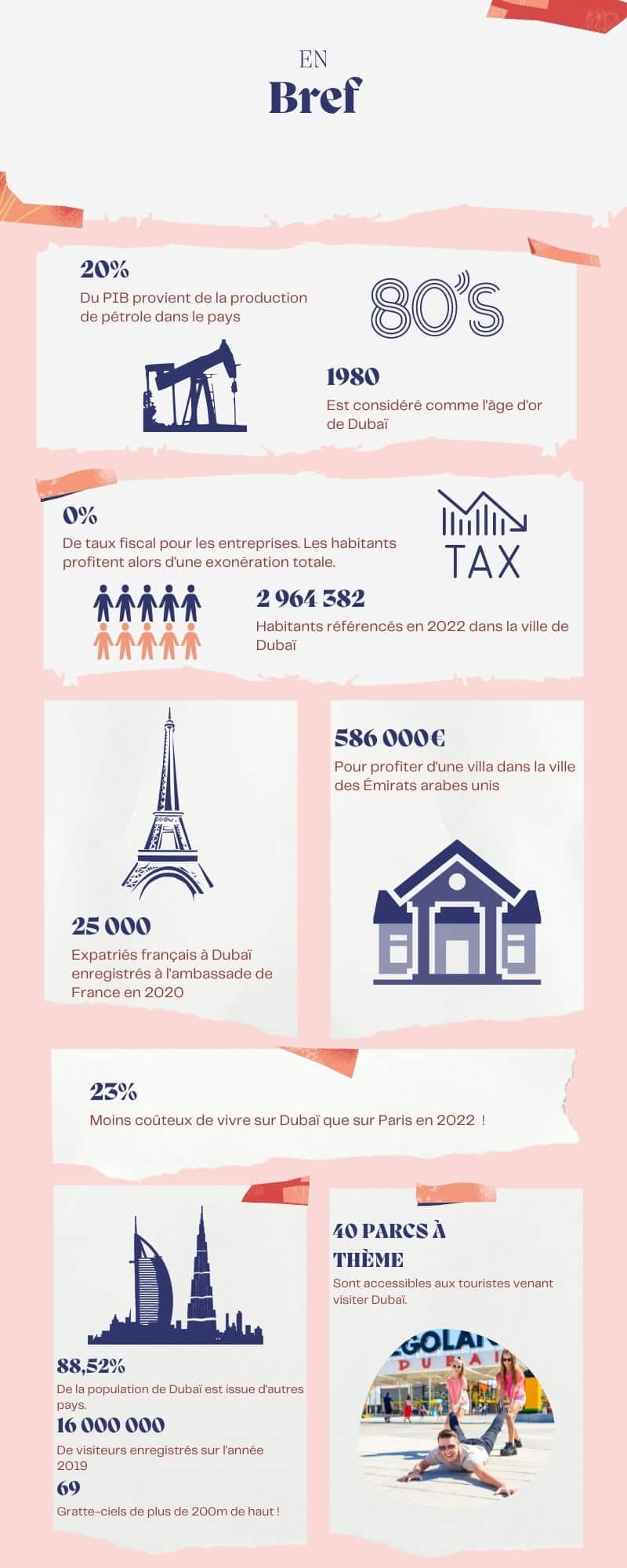
Table of contents
- Oil: 20 % of the country's total economy
- 1980: the start of Dubai's golden age
- 0 % income taxes
- Almost 3 million inhabitants
- 25,000 French expatriates in 2020
- Cost of living 23 % lower than in France
- A villa for €586,000
- 88.52 % of population from foreign countries
- Over 16 million visitors in 2019
- 69 skyscrapers over 200 m high
- 40 theme parks
Oil: 20 % of the country's total economy
The hydrocarbon trade represents 20 % of Dubai's total GDP. Over the years, this figure has tended to fall. In fact, other sectors are beginning to emerge in the UAE megalopolis. Real estate, finance and insurance, for example, account for a substantial proportion of the total. 13 % of GDP. In third place, we find the retail and hospitality sectors with 12 % of GDP. The transport and communications sectors account for only a small share, than 6 % of GDP.
Although the city has been in existence for almost 200 years, Dubai's economic growth began to evolve. in the late 80s.
1980: the start of Dubai's golden age
Thanks to its unique location, the geographical area where Dubai stands today is inhabited by for over 5,000 years. However, it was not until 1833 that the first signs of the city took shape. By 1894, Dubai was experiencing significant commercial growth. Numerous specialty stores were established in the city. It was not until the late 1960s, however, that the city began to exploit the various oil deposits in the surrounding desert.
While the 70s were marked by a major demographic expansion, it was the the '80s the first signs of economic prosperity. Today, the country's tax status attracts many expatriates, increasing the number of residents in Dubai.
0 % income taxes
In Dubai, taxpayers pay no income tax. Nor is there any corporate tax. Thanks to this status, Dubai is one of the world's 24 tax havens. More than 600 French companies are taking advantage of this considerable help to develop. Despite the ever-growing number of inhabitants, trade is thriving in the UAE city.
Almost 3 million inhabitants
Dubai's population is constantly growing. If the city only had 20,000 inhabitants in 1950In 1969, the city's population began to grow rapidly. At that time, the city had 62,000 inhabitants an increase of over 19 %. In 2019, they are over 2,833,000 inhabitants living in the city of Dubai.
However, the pace of growth has slowed in recent years. In 2021, Dubai will have a population of 2,921,376. In 2022, they will number 2,964,382. Forecasts show that by 2035, the city will have a population of 3,526,254. However, while growth appears to be slowing, the city continues to welcome more and more French expatriates.
25,000 French expatriates in 2020
In 2020, are nearly 25,000 French expatriates which are registered at the French Embassy in Dubai. With a strong demand for hotels and restaurants, many French people are attracted to the country of the United Arab Emirates. Over the past 10 years, the number of French expatriates has almost doubled. In 2013, there were 15,000 French in the megalopolis. This growth can be explained by the development of companies wishing to take advantage of the country's tax-free environment.
Dubai is home to many registered French nationals, and Abu Dhabi is also a major magnet for French speakers. However, Dubai offers other advantages such as a lower cost of living.
Cost of living 23 % lower than in France
With a cost of living 23 % cheaper than FranceDubai is a destination that saves you money. For your trip, allow at least 75 € per day per person. A mid-range hotel will only cost you an average of €76. That's a 9 % cheaper than for a hotel of the same standard in France. In the same vein, the price of a single transport ticket is on average sold at €1.28. Finally, a minute's mobile call to a landline costs only 0.12 € or 27 % less expensive than the average cost of a call in France.
These prices are also reflected in the cost of real estate in Dubai. As a result, it is sometimes much cheaper to buy a property in the UAE city.
A villa for €586,000
An apartment costs just €2,548 per square metre in 2020. By way of comparison, an apartment in the center of Paris costs an average of €11,064 per square meter. However, average prices per square metre must also be considered in relation to a number of other parameters. For example, when considering the location, standing and year of construction of the property, you should expect to pay on average 586,000 for a villa in Dubai.
Real estate in Dubai is booming. By 2021, more than 39,000 apartments that are sold. We also list the sale of 13,600 villas an increase in sales of 112 % compared with 2000. Unlike other cities, most buyers in Dubai come from an expatriate population.
88.52 % of population from foreign countries
The majority of Dubai's inhabitants come from foreign countries. In first place are expatriates from India. The latter are present at more than 27 % in the city of the United Arab Emirates. Next comes Pakistan with a total community of 12 %. Bangladesh and the Philippines are neck and neck with communities representing respectively 7 % and 5 % of Dubai's population.
With a local population of some 11 %Dubai is a truly cosmopolitan city. This characteristic attracts more and more visitors every year.
Over 16 million visitors in 2019
The number of visitors to Dubai is rising steadily. In 2015, there were 14 million annual visitors. This trend has only increased until 2019, when the city welcomed more than 16,730,000 new visitors. However, with the coronavirus crisis, visitor numbers fell sharply in 2020. With 5,510,000 visitors that year, the city experienced a loss of 67 % in the tourism sector.
By 2021, tourism will be back on course and over 7 million registered visitors in Dubai. A visit to the skyscrapers is one of the most popular attractions, offering visitors a unique panoramic view of the entire city.
69 skyscrapers over 200 m high
The city has 69 skyscrapers over 200 m high. These include, of course, the Burj Khalifa with its a height of 828 m. Next is the Marina 101 with a height of 425 m. The city's third-highest skyscraper rises to 413 m. The Princess Tower, the third tallest skyscraper, was built in 2012.
Of course, not all of Dubai's skyscrapers are open to the public. However, a visit to the Burj Khalifa is a must for many visitors. For those with a fear of heights, the city also offers a host of attractions.
40 theme parks
Dubai is a veritable playground for anyone who loves theme parks. The city boasts over 40. Among the most visited parks in Dubai are :
- Motiongate welcomes 1,460,000 people every six months
- Lego land recorded almost 2,800,000 visitors a year
In conclusion
Dubai is a city in constant expansion.
Despite the economic slowdown caused by the coronavirus crisis, the city is gradually rising from the ashes and welcoming many new visitors. Here, they can enjoy a thousand and one activities.
Perfect for entrepreneurs, it also offers the possibility of making certain savings on corporate taxation.
What to do in Dubai in 1 day, 2 days, 3 days, 5 days, a week?
Whatever the length of your stay, I invite you to download my special Dubai guide.
It's free and in PDF format.
All you have to do is tell me below which e-mail address you'd like to receive it at.
EDIT: you can't enter your email?
Take the quiz at the top of this article and you'll be able to register your email address to receive the special Dubai guide!


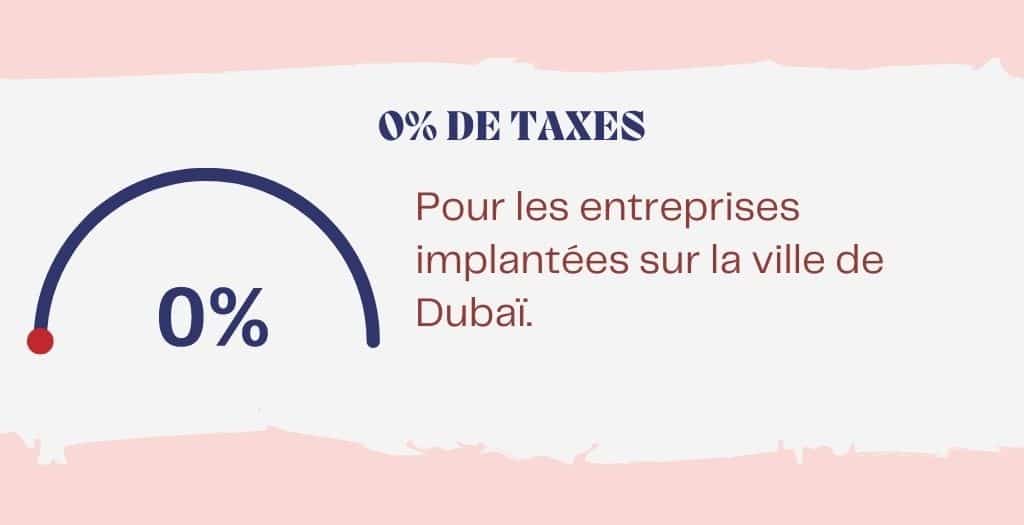

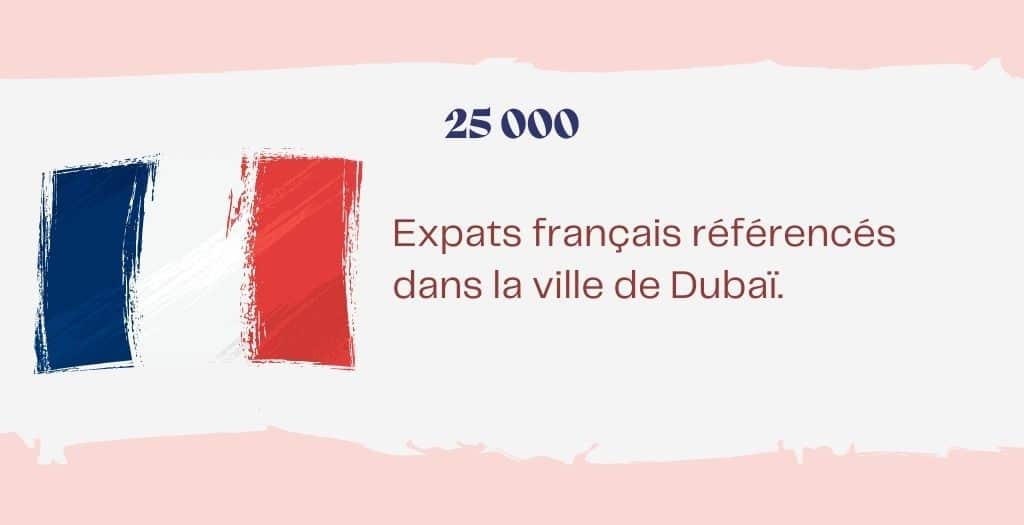
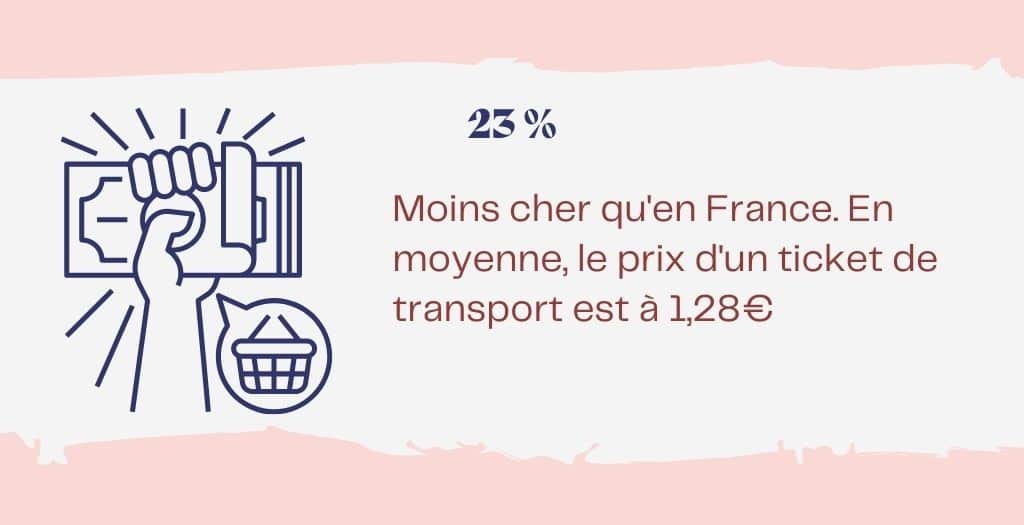
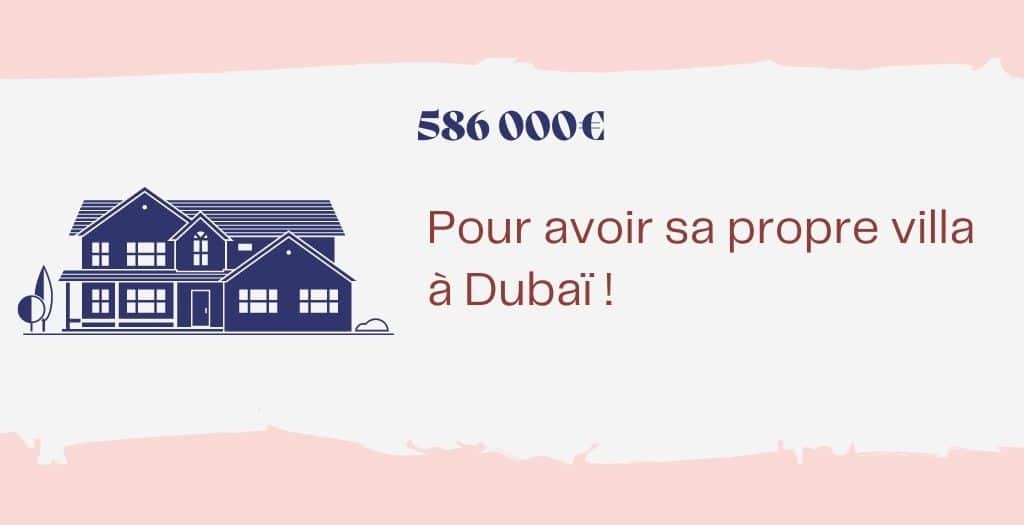
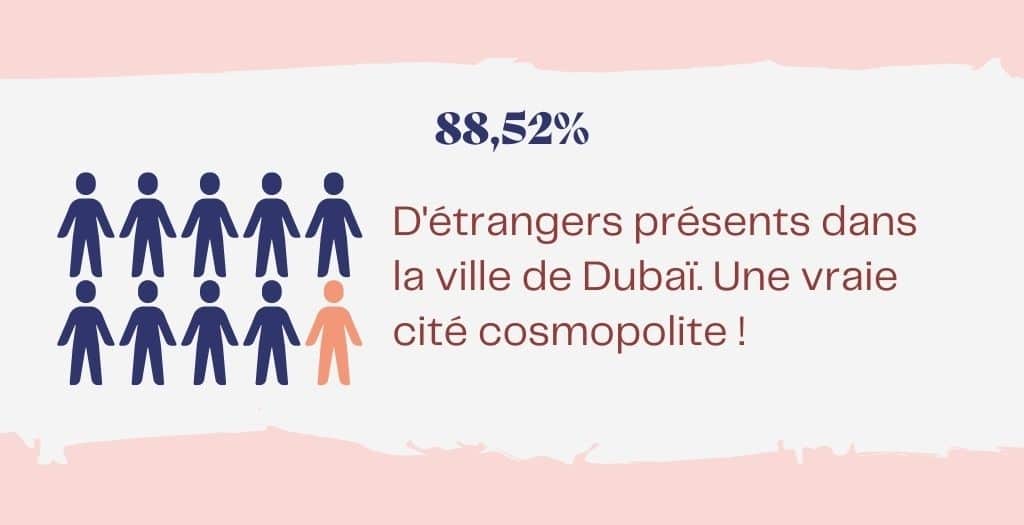
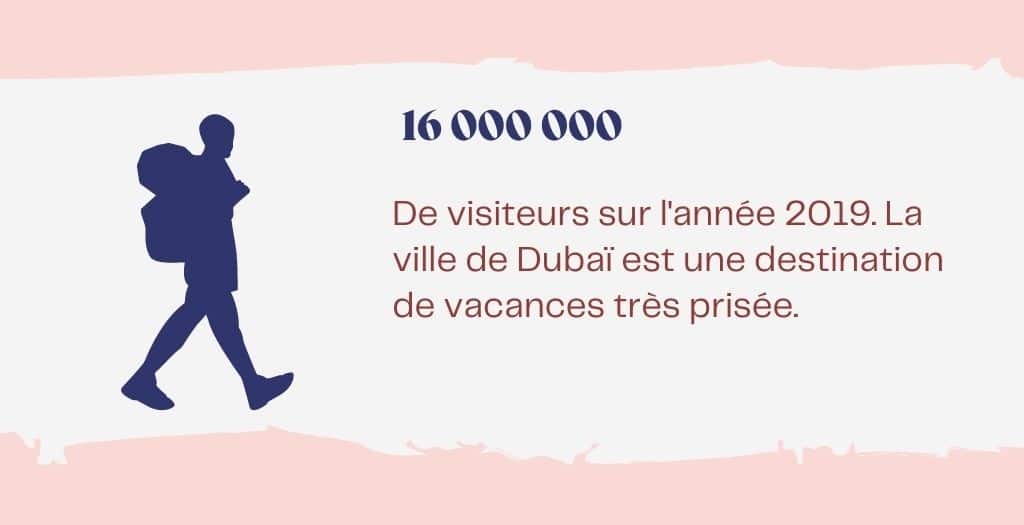
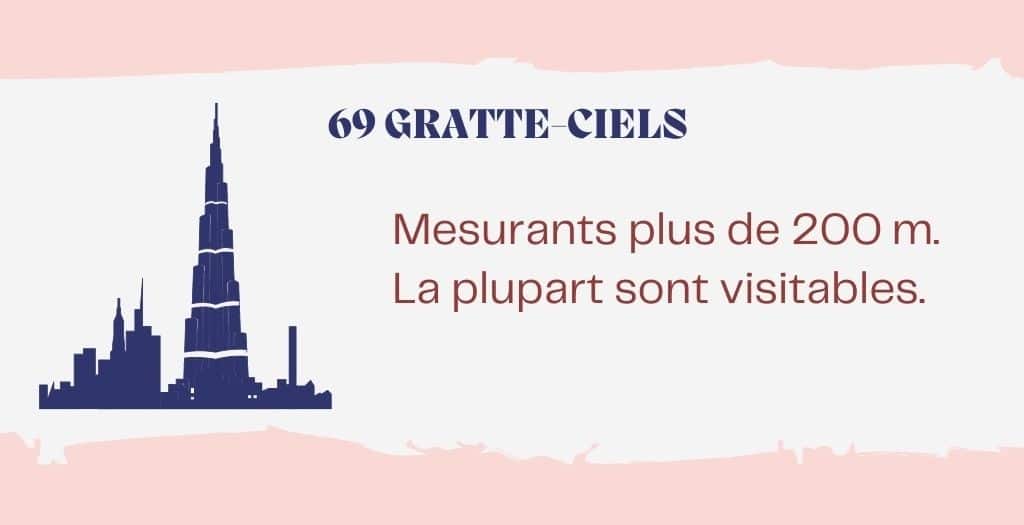
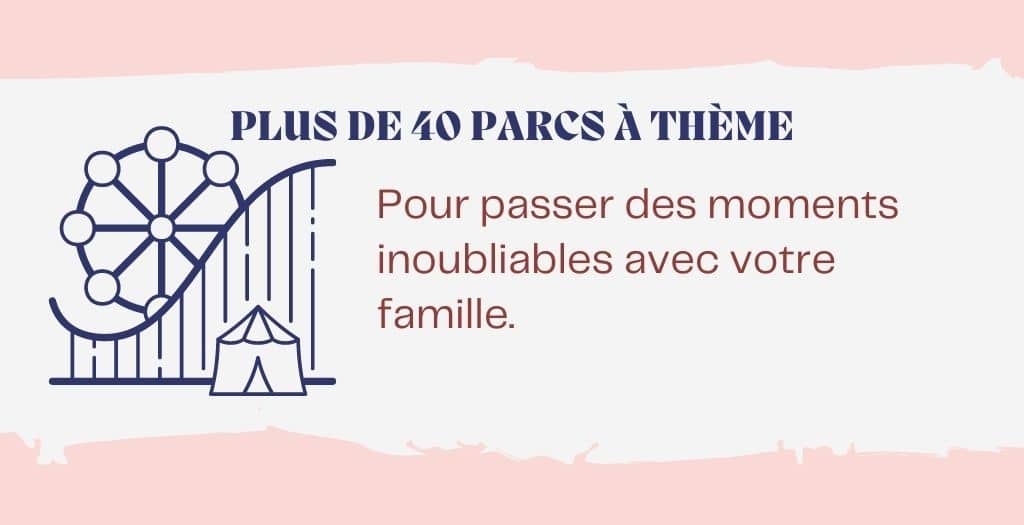
Leave a Reply